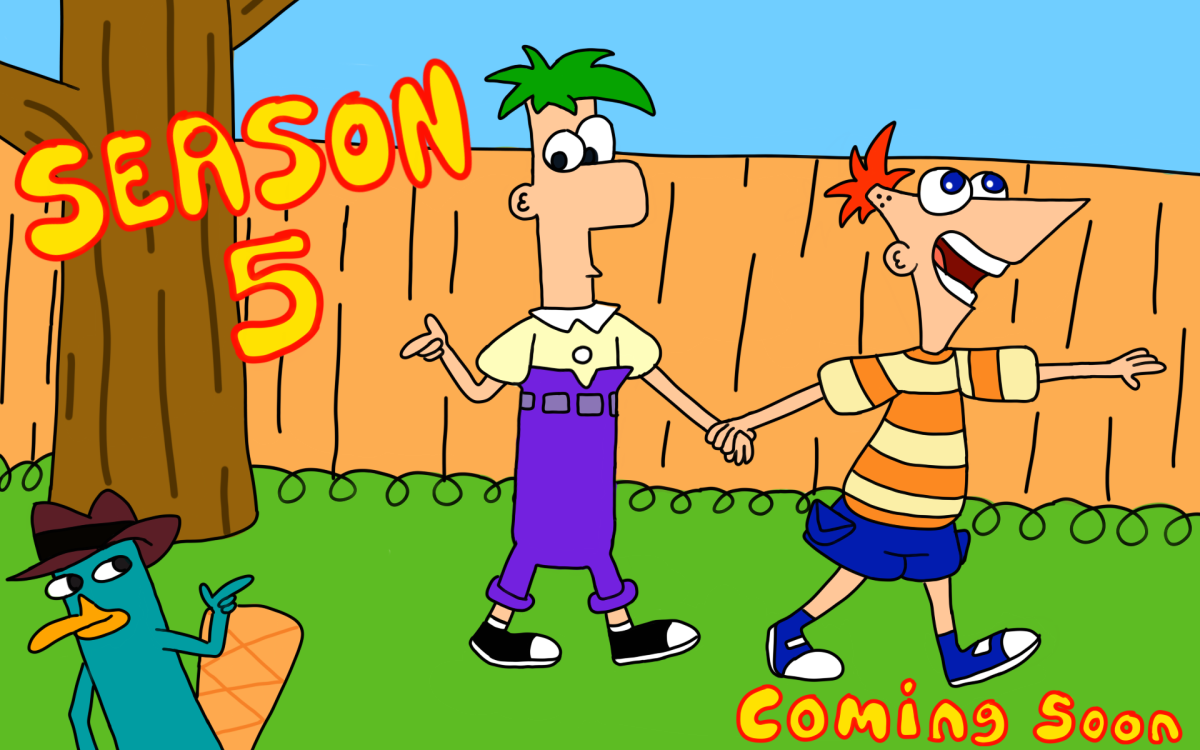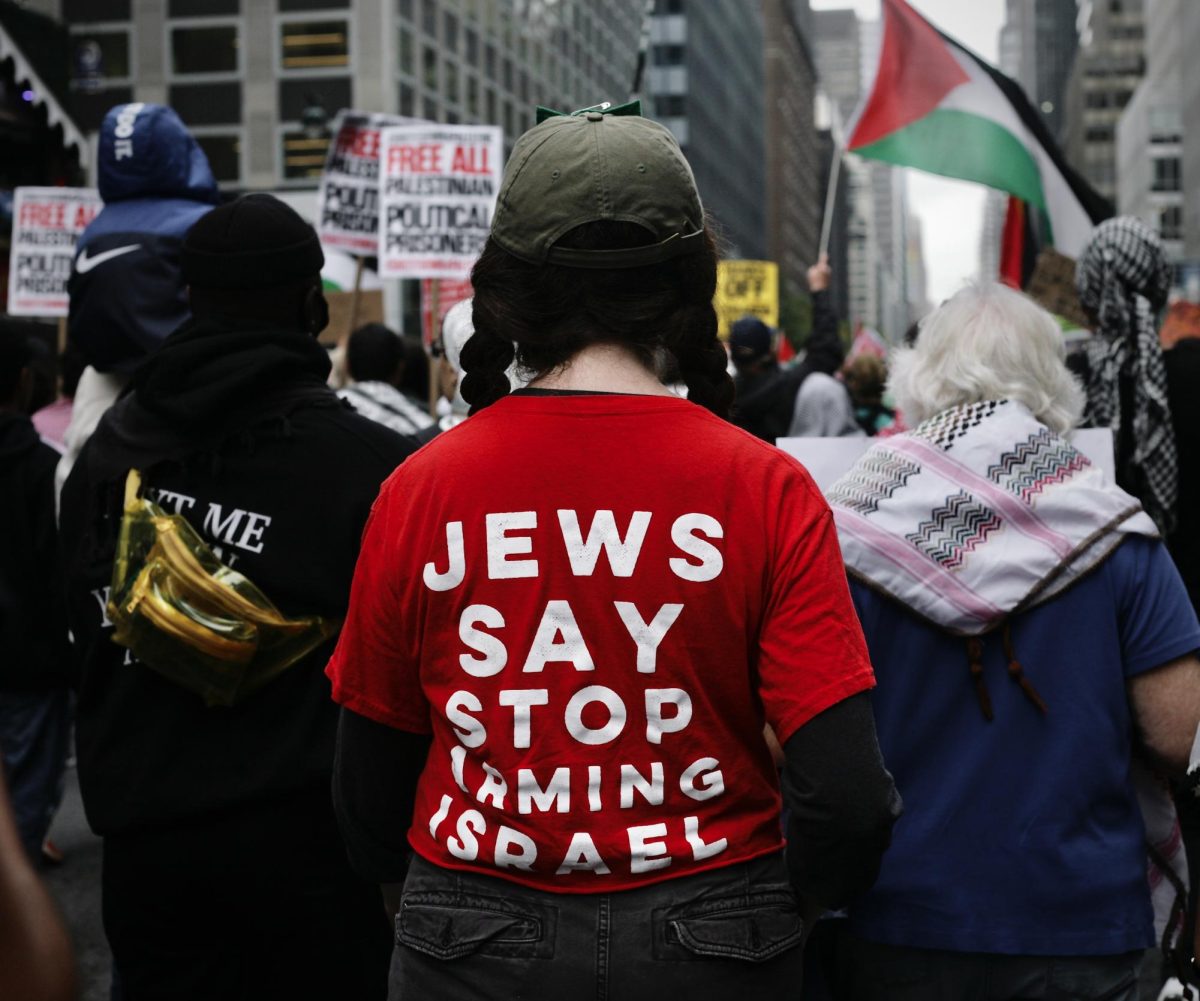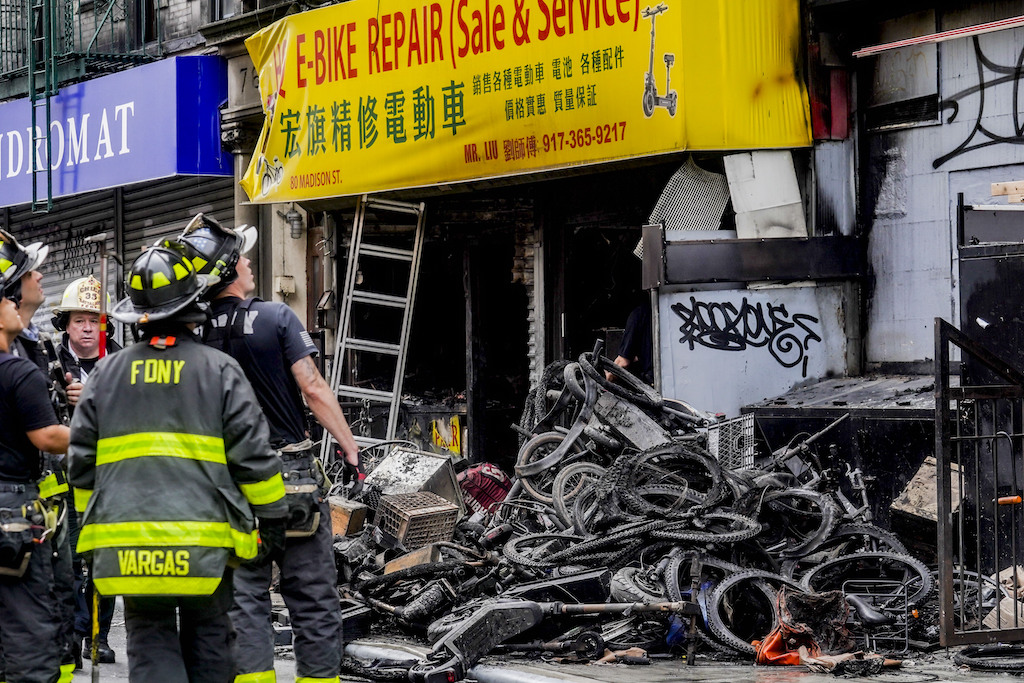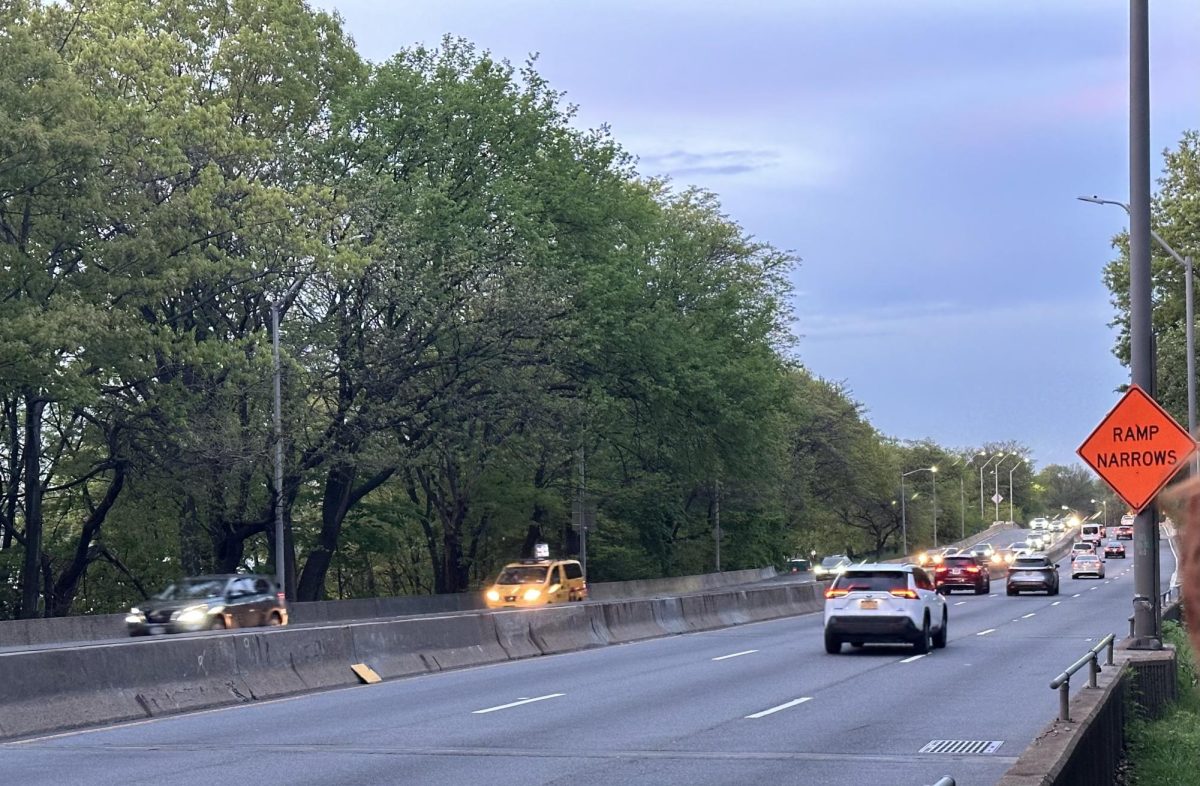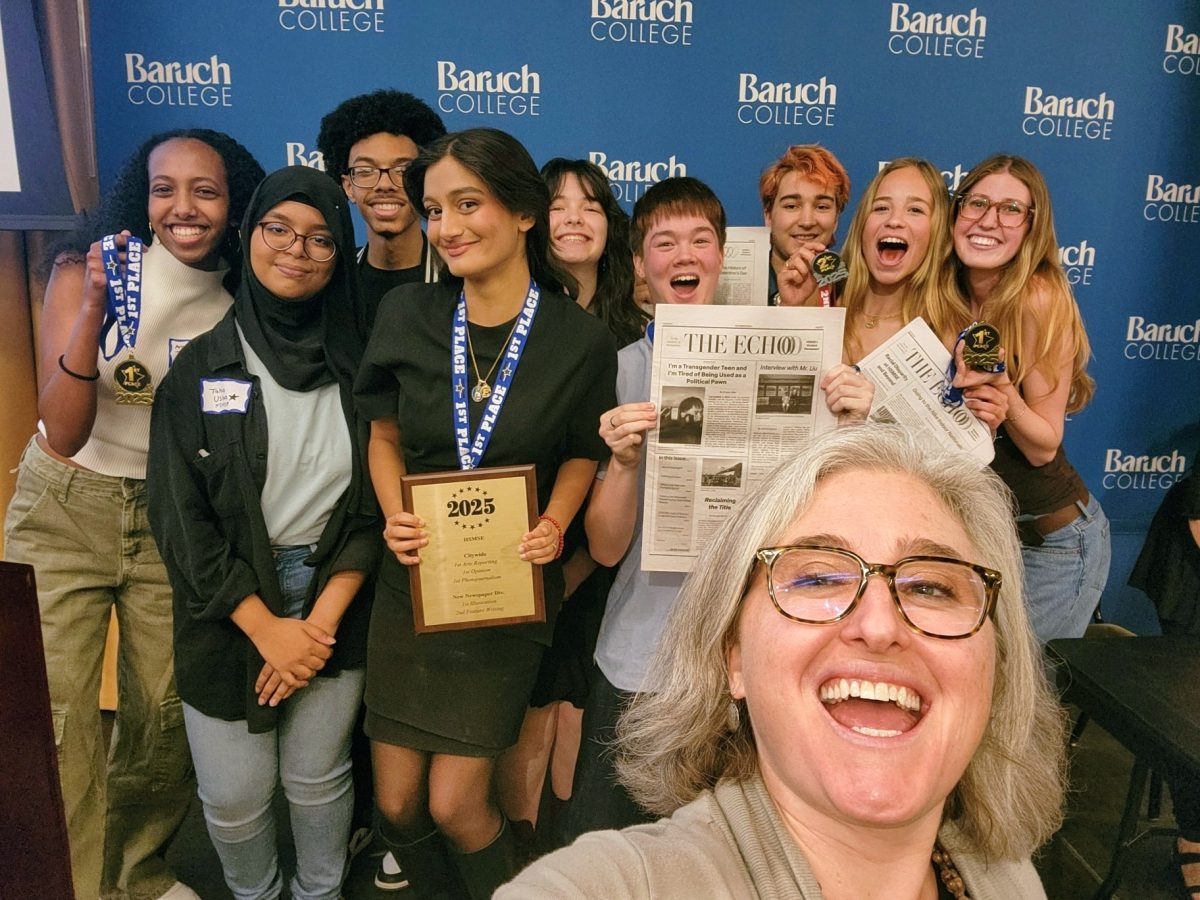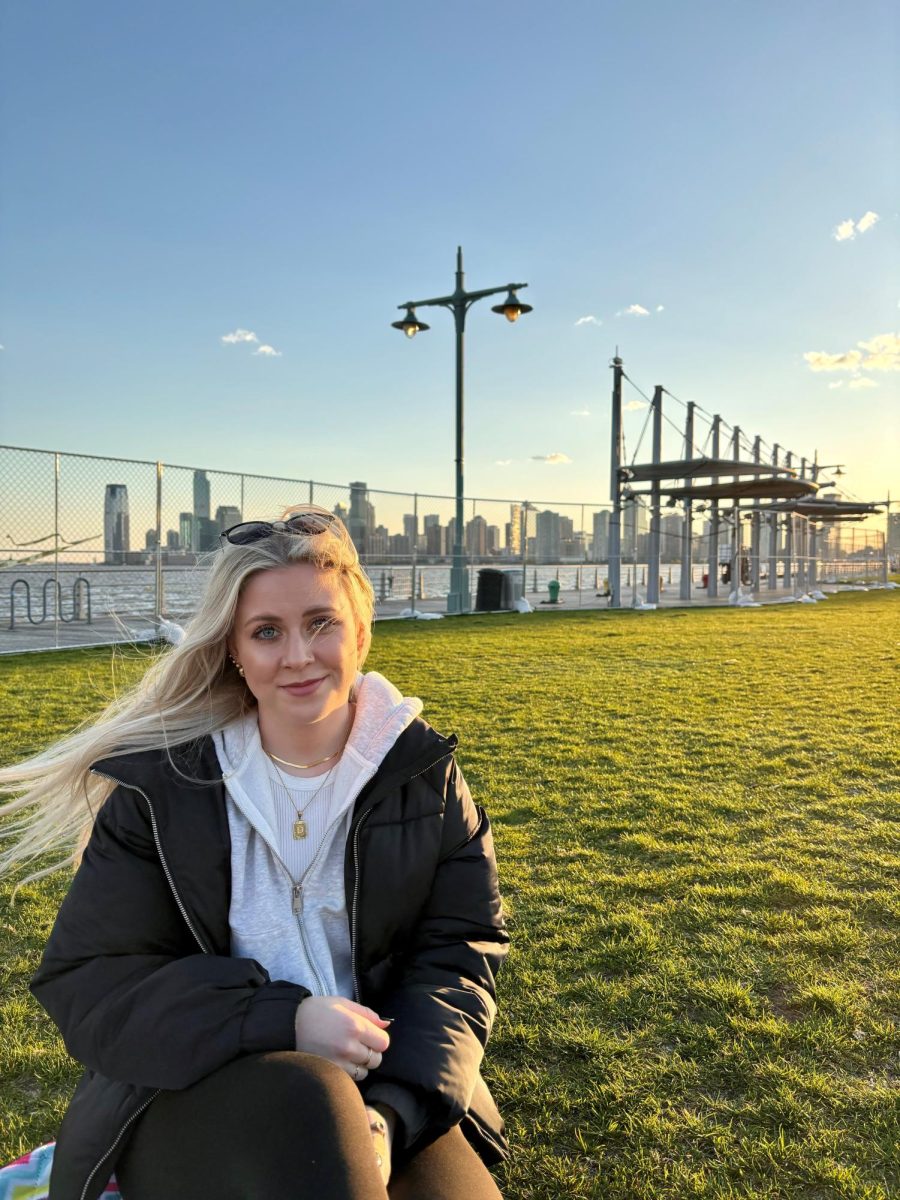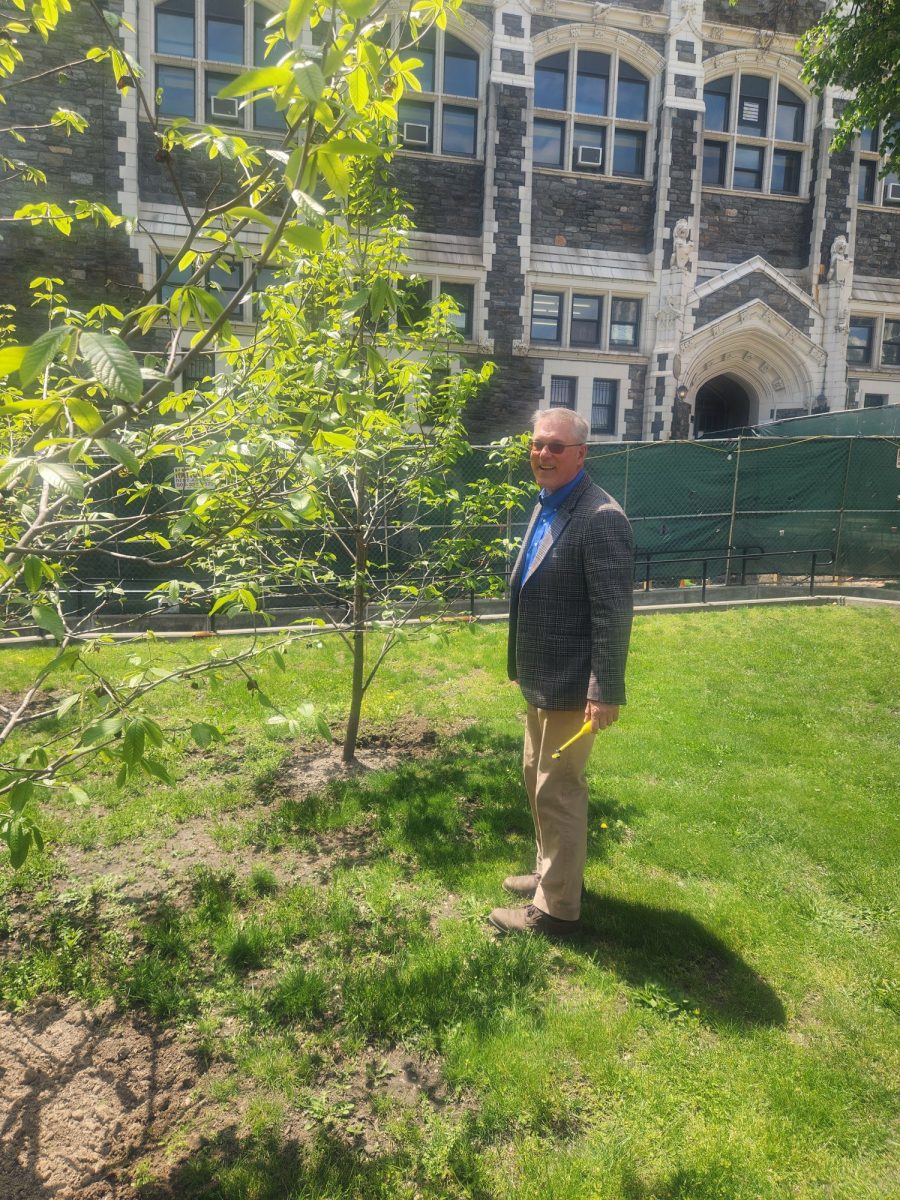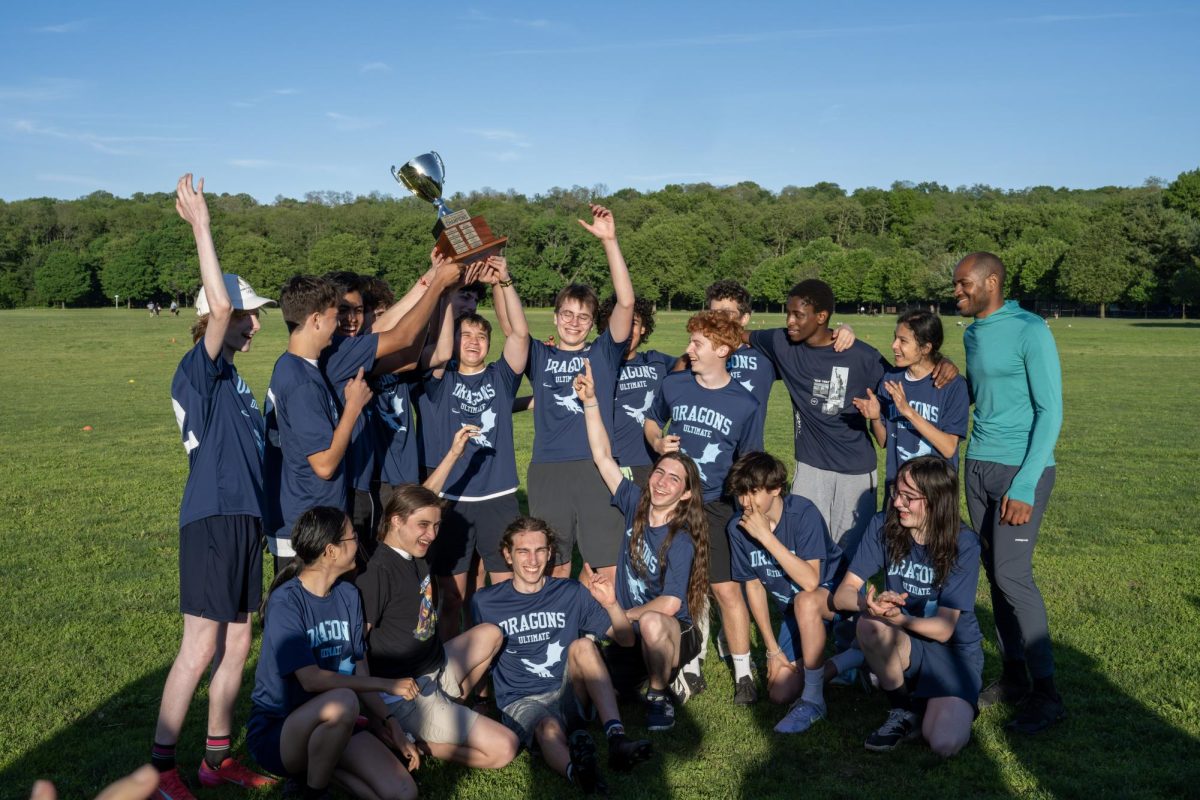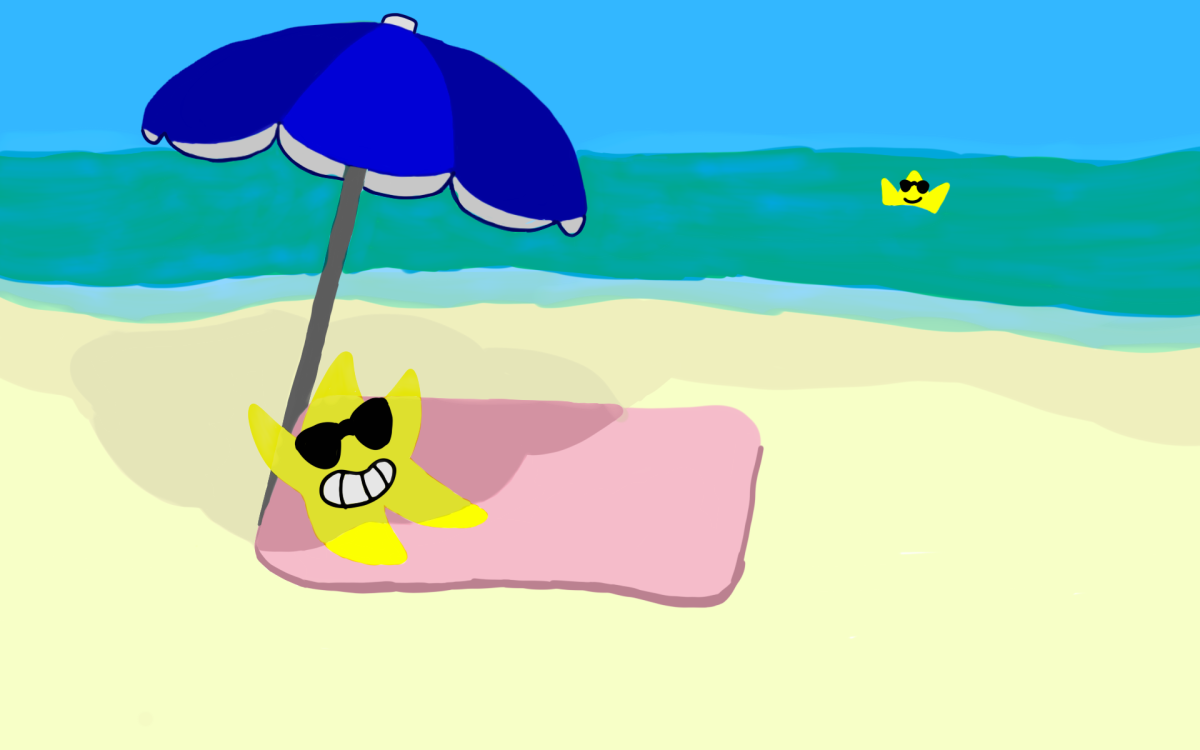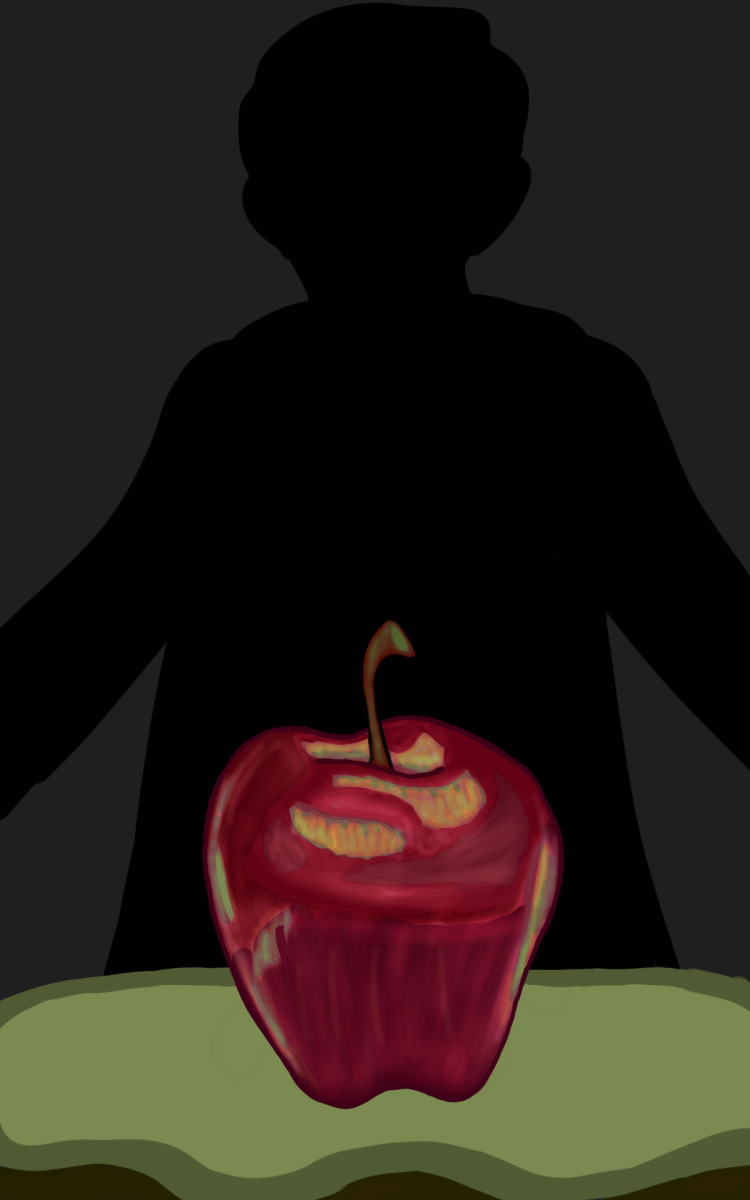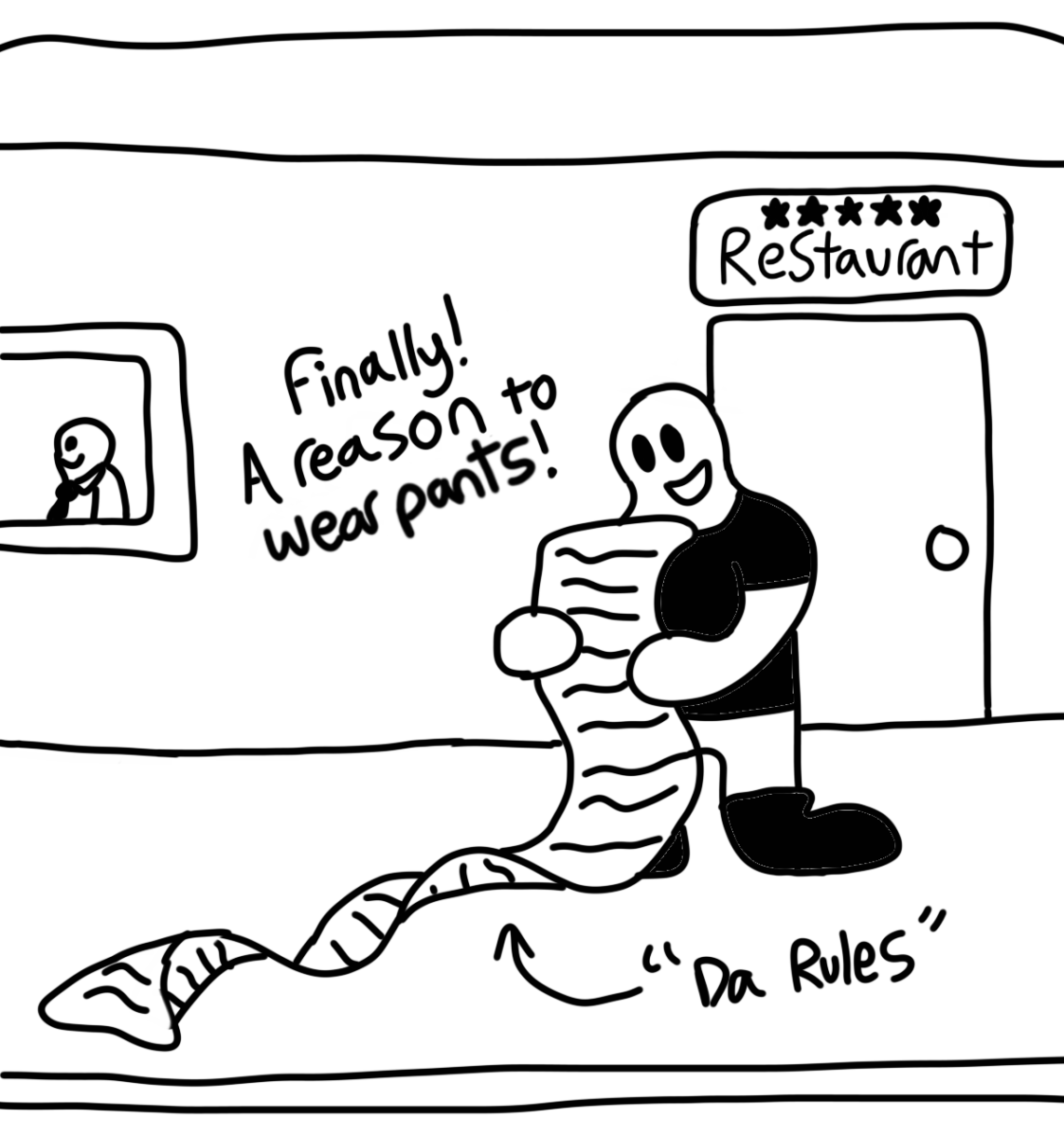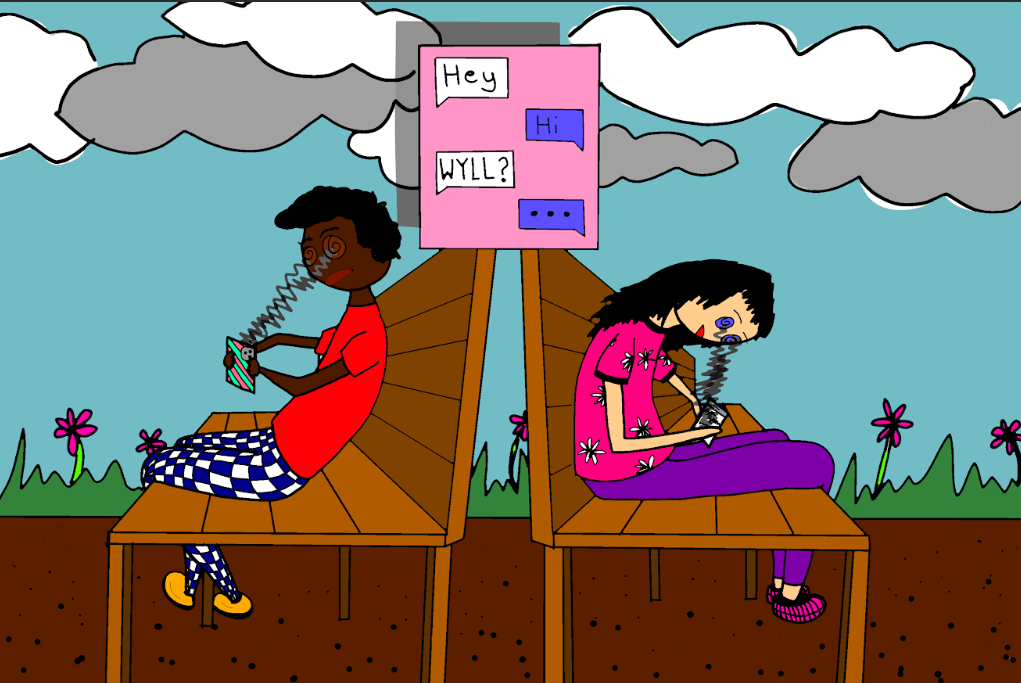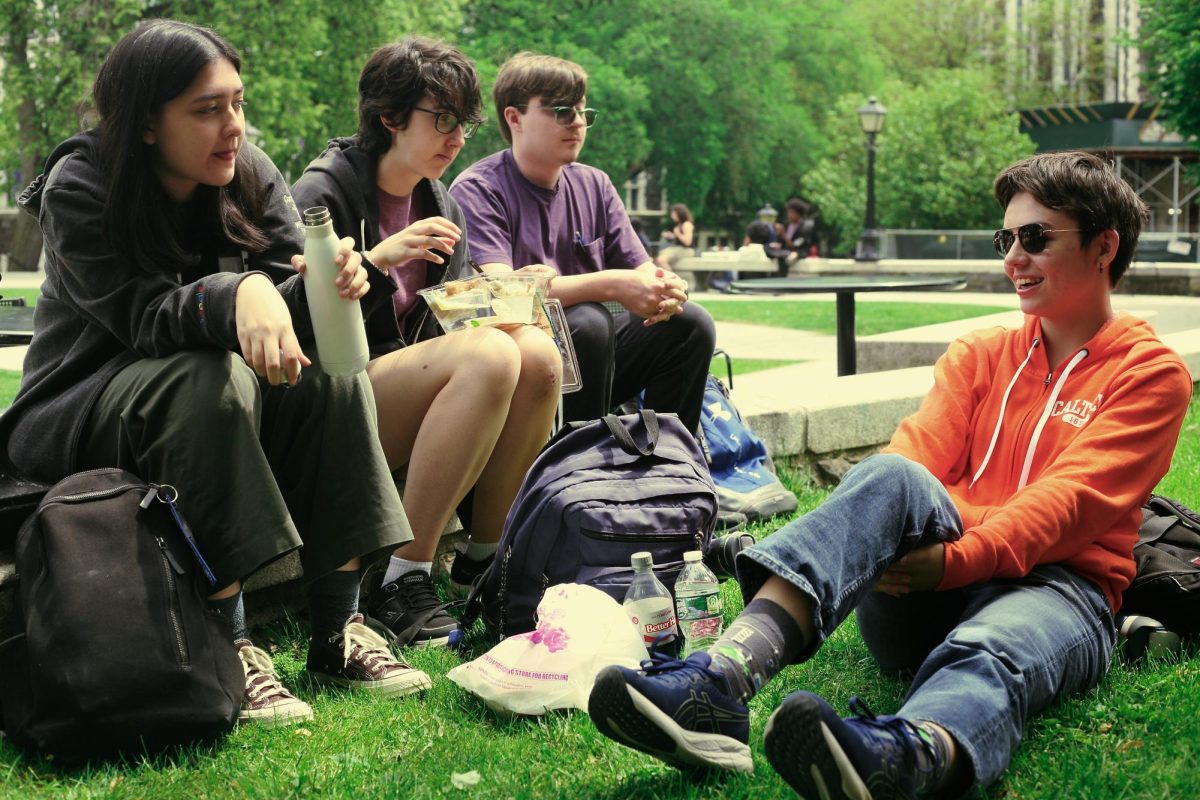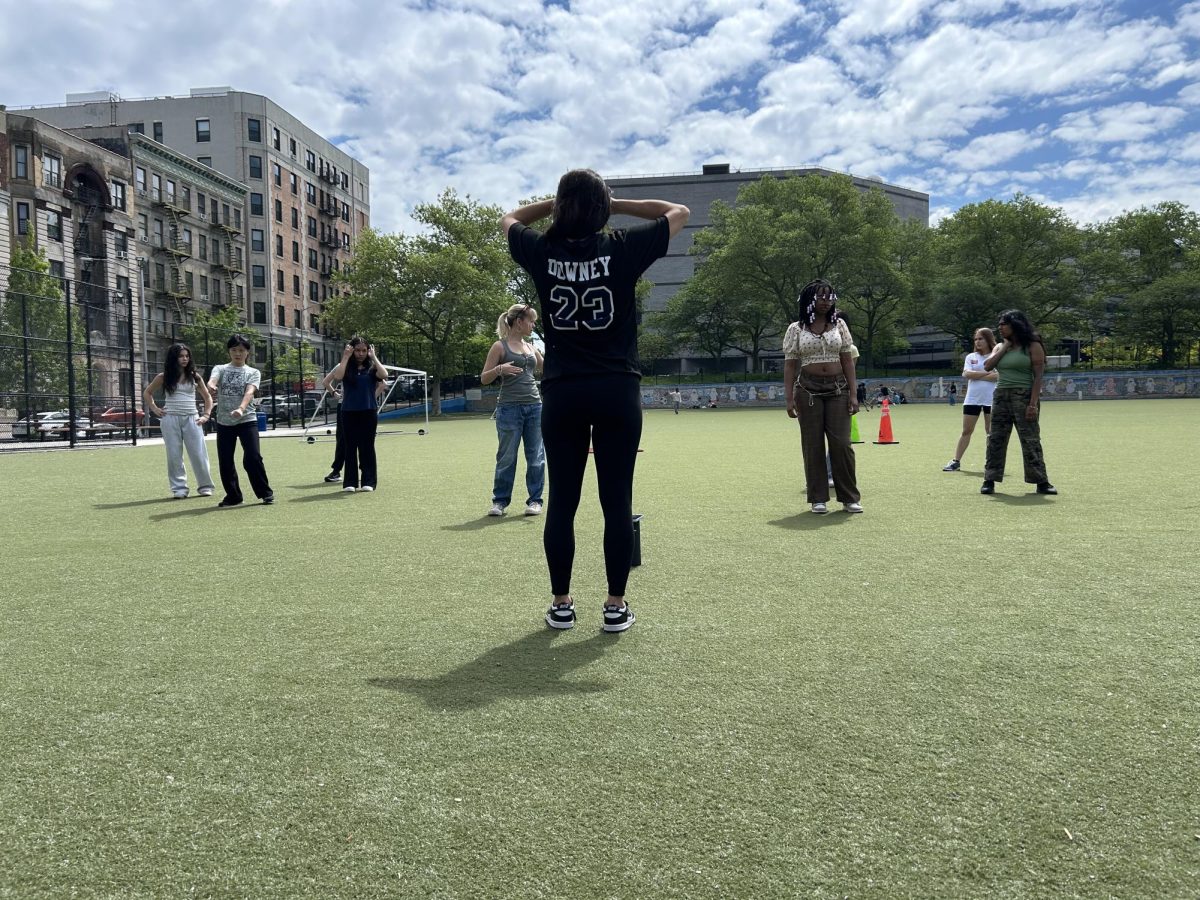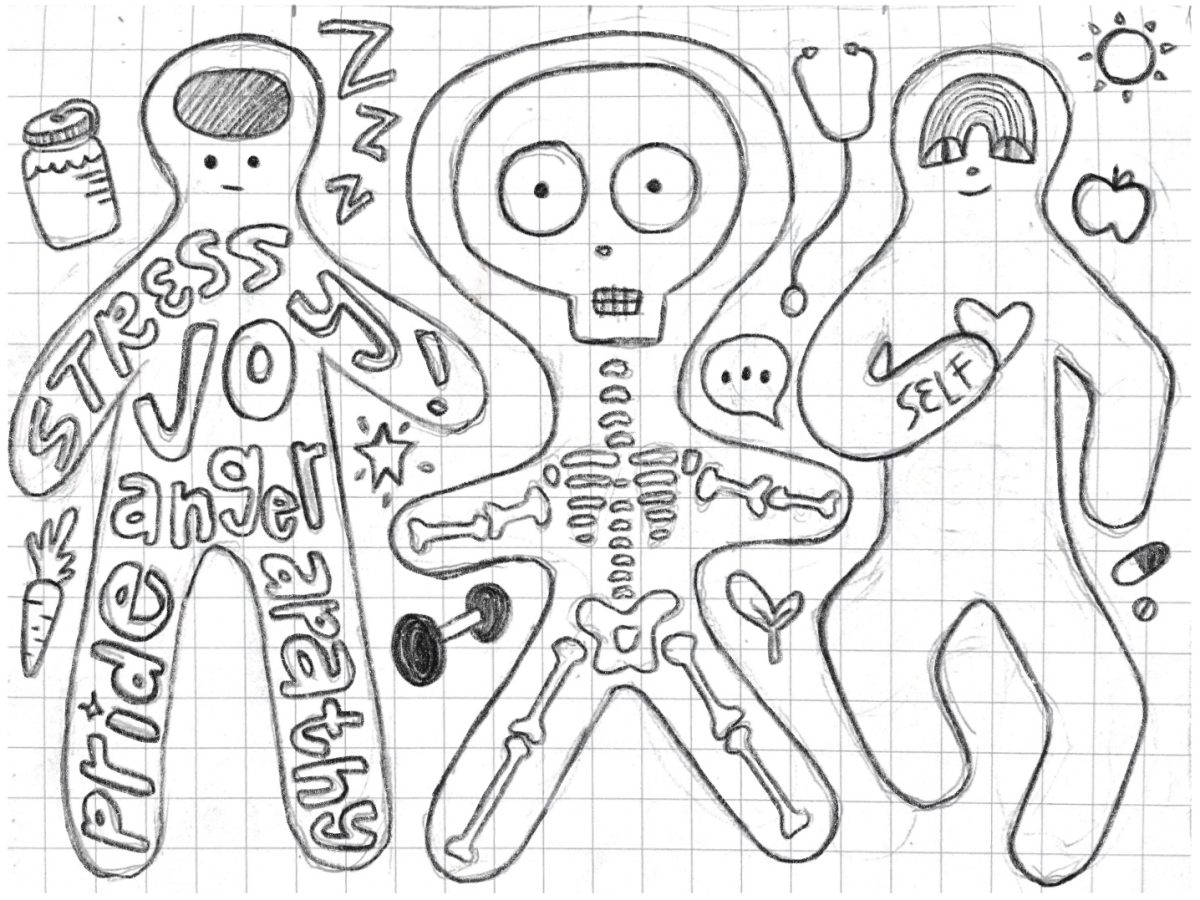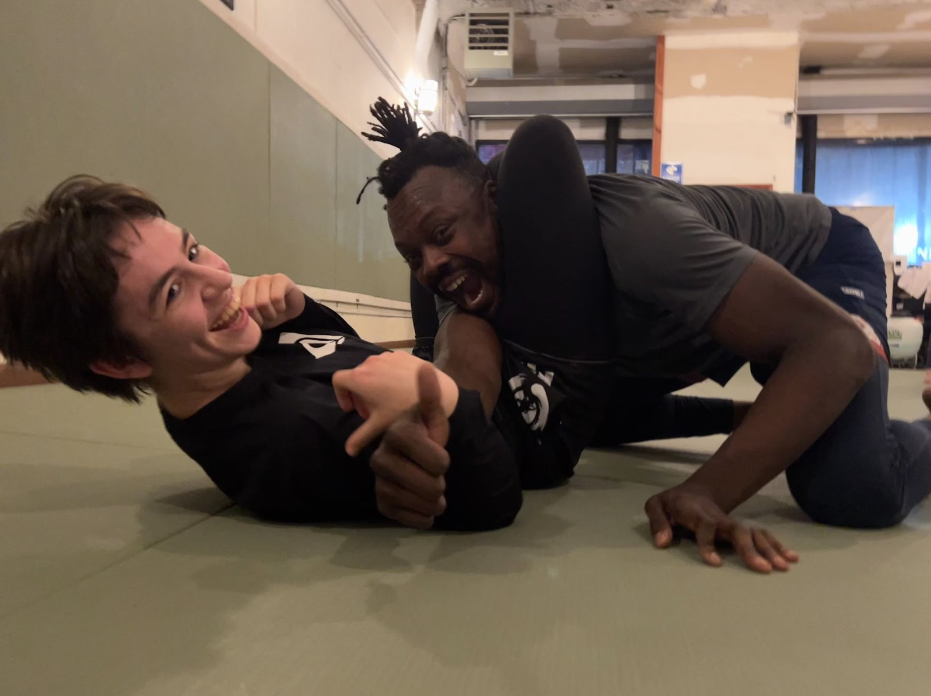I got into Brazilian jiu-jitsu in late 2022, right after my younger sister started taking classes. Jiu-jitsu is a grappling sport where you use chokes, sweeps, and manipulation of various limbs to get the upper hand against an opponent—it’s derived from Japanese jiu-jitsu and judo, and looks similar to wrestling. Before trying jiu-jitsu, I had only been interested in traditional Japanese karate, which was (and still is) my way of practicing mindfulness and improving my mental health. My favorite thing about karate was that I could do it “alone.” I was with other people, but I focused on my own improvement and didn’t have to compete against anyone other than myself. Jiu-jitsu seemed scary in comparison: It looked sweaty, dangerous, and too competitive for my taste. Besides, I wasn’t excited to be up-close-and-personal with other people, whether we were practicing a sport or not. However, jiu-jitsu class is now one of the best parts of my day and I can honestly say that I feel safer and more comfortable there than almost anywhere else.
Many people think of jiu-jitsu as a “dangerous” sport, and that’s not wrong—even in the safest dojos, injuries are an unavoidable part of fighting sports and sports in general. However, the risk of serious injury is low if you have a good teacher and training partners. My jiu-jitsu instructor, Matthew Fremon from UWS Kenshikai Karate & BJJ, has many ways to keep people safe in his classes: “If I feel it across the whole room [that the atmosphere is getting a little dangerous]… I’ll just say ‘Hey everyone, settle down a little bit,’ and because I speak about safety and being good training partners so much, they all know what I mean.” Because jiu-jitsu is entirely partner work, more experienced students keep the energy of the class at a safe level and help newer students understand the material. Jiu-jitsu can be translated roughly to “gentle art” or “yielding art” in Japanese, which is fitting—it’s more about using an opponent’s strength against them than using your own strength, which makes it a good sport for smaller people to try. Additionally, there is no punching or kicking in jiu-jitsu, so you generally won’t feel as “beat up” after class as you might in a sport like boxing or kickboxing.
Even with less fear of physical injury, many people are initially uncomfortable with the close physical contact of jiu-jitsu. My family and friends who don’t do martial arts sometimes ask me how I can feel comfortable grappling with someone at all: Isn’t it sweaty and awkward and uncomfortable? Sweaty, yes, but I don’t find jiu-jitsu awkward or uncomfortable at all. Unlike with unwanted hugs and friendly pats on the shoulder from people I don’t know very well, I agreed to do jiu-jitsu. Also, there are a lot more boundaries and rules in jiu-jitsu than there are in everyday life. For example, each round starts and ends on a bell. When someone “submits” their training partner (putting them in a momentarily painful or potentially dangerous position until they give up), the person who is being submitted taps on their training partner as a signal for them to let go. Everyone has to “respect the tap” no matter what. Additionally, people respect each other’s physical and mental limitations in jiu-jitsu, working around injuries and training at the energy level that they both agree on. That makes the whole physical contact part of jiu-jitsu way less stressful. We’re just there to train and have fun, and it’s not as intense as it seems from the outside. As Matthew Fremon told me, “I try very hard, especially on people’s trial classes, to be light about a lot of it, make jokes, do things that make them feel like, ‘No, you’re not in army boot camp—this isn’t the most serious endeavor in the world.’”
Not every dojo is going to be relaxed or light-hearted about jiu-jitsu, and some dojos are more focused on just training rather than building a sense of community. I think that’s fine, as long as everyone trains safely and treats each other with respect. As a very social person, I like making friends while I’m training, which is what I love about UWS Kenshikai Karate & BJJ. The atmosphere there is serious about jiu-jitsu but generally friendly and relaxed. It’s a place where I can let down my guard a little and just be myself, and I enjoy interacting with a large, diverse group of training partners who I trust.
Every jiu-jitsu dojo has different energy, and it mainly comes down to finding the dojo that’s right for you. The most important thing to keep in mind is your own safety, but you should also be thinking about the intensity and vibe that you want in a jiu-jitsu class, and looking around at the people that you may be training with. “If every single person in [the dojo] is a 240-pound bodybuilder, it isn’t that they made them, it’s that everyone who wasn’t one of them did not stay around,” says Matthew Fremon. Unless you are a 25-year-old pro athlete in incredible shape, you may want to look for a dojo with people of many different ages, athletic abilities, and experience levels.
For all HSMSE students who want to make more friends, try new things, or improve their physical and mental health, I recommend trying at least one jiu-jitsu class. It’s a great way to get exercise while meeting people with similar interests, and, as Matthew Fremon puts it, “It’s a really fun thing to take seriously.”
